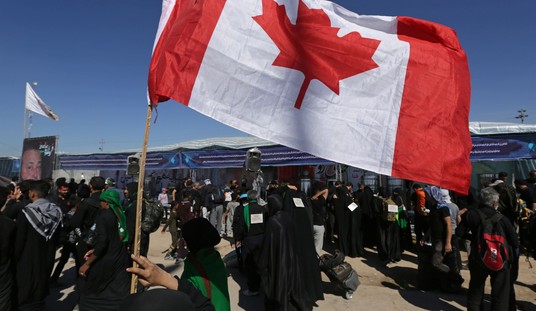We’ve written here at length about the skyrocketing murder and gun crime rates in Baltimore over the past few years and the various measures which have been proposed to combat the problem. But lost in much of this debate is the question of how things got this bad and when it all began going off the rails. The crime rate in Charm City was never really rock bottom and the town has been famous for both corruption and gang violence, but it wasn’t this bad. Baltimore, with a population of a little more than 600K people, had nearly 350 murders last year. By comparison, New York City registered 290 killings and they have more than 8.5 million residents. So what happened to Baltimore?
A new report published at USA Today may not be absolutely definitive, but they make a very strong case in attempting to answer the question. The timing is not coincidental. The climb in the murder rate began immediately after the Freddie Gray riots. That was also the same time that Baltimore police officers seemed to “stop noticing” a lot of crime and focused primarily on responding to emergency calls. Proactive policing on the streets dropped by more than half in some cases.
Just before a wave of violence turned Baltimore into the nation’s deadliest big city, a curious thing happened to its police force: officers suddenly seemed to stop noticing crime.
Police officers reported seeing fewer drug dealers on street corners. They encountered fewer people who had open arrest warrants.
Police questioned fewer people on the street. They stopped fewer cars.
In the space of just a few days in spring 2015 – as Baltimore faced a wave of rioting after Freddie Gray, a black man, died from injuries he suffered in the back of a police van – officers in nearly every part of the city appeared to turn a blind eye to everyday violations. They still answered calls for help. But the number of potential violations they reported seeing themselves dropped by nearly half. It has largely stayed that way ever since.
The report indicates that in the period since the riots in 2015, police have initiated investigations into less than half the number of suspected narcotics offenses that they did in prior years. Cases where police reported randomly seeing someone with an outstanding warrant and bringing them in were down by half. Instances of “field interviews” (where police stop someone on the street for questioning) plummeted by 70%. One retired Baltimore detective described it as a situation where the cops are, “just driving looking forward. They’ve got horse blinders on.”
But should we really be surprised at such a sea change? Following the death of Freddie Gray, the mayor and the city government basically threw the cops under the bus, though none were later found guilty of any serious wrongdoing. During the riots, the mayor ordered the cops to pull back and basically stand down while mobs were setting the city on fire. And after all that, not only were the cops put on trial, but state and federal investigations were launched into how the police conducted themselves. Why go out of your way to do your job (and risk your life in the process) when you might lose your job as a result and City Hall probably won’t have your back?
As the report concludes, the gang leaders in Baltimore may be criminals but they’re not stupid. They know that they have more of a free hand to commit crimes, up to and including murder. And if the cops aren’t going after them on the corners they have a much better chance of getting away with it. That’s led to a three year period where the streets of Baltimore have basically turned into a war zone.
Does this seem surprising to you in any way? Grim though the numbers may be, it really should have been predictable.








Join the conversation as a VIP Member